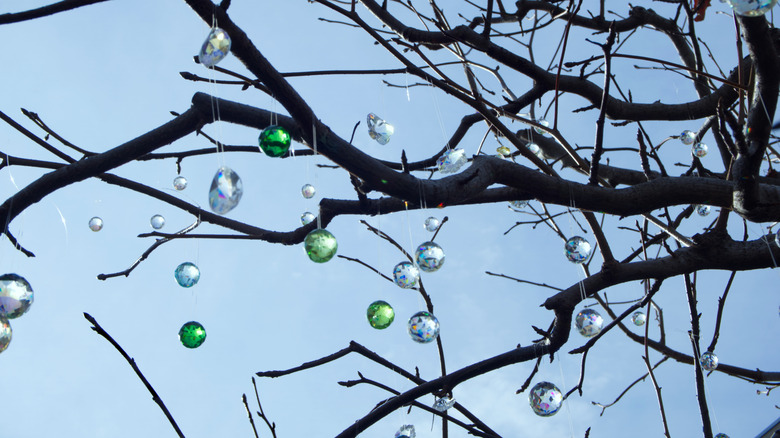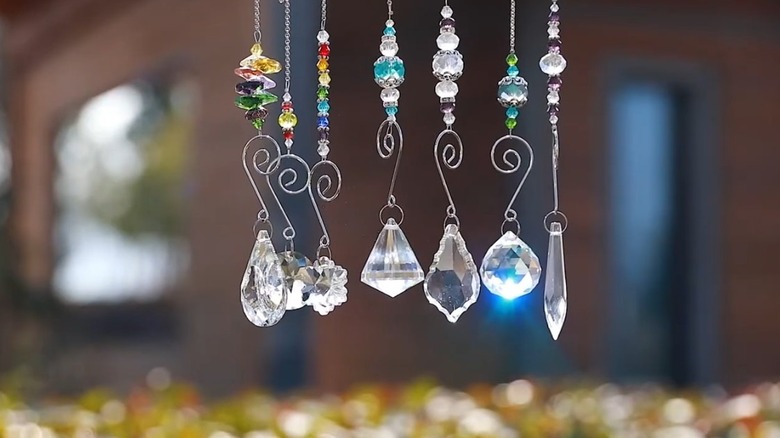Do Crystal Suncatchers In Your Garden Create A Fire Hazard?
Gardens can be a wonderful way to express your creativity and individuality — from the beautiful plants you choose to the decorations you use. You might have designed your garden to create a whimsical place to escape to when you are stressed. If you're the creative type, you've probably come up with unique ways to decorate your garden getaway. Maybe you used thrifted teacups to diy garden décor or perhaps you've used old CDs to make stunning suncatchers because you were worried about using crystals that might cause a fire. But are crystal suncatchers really a fire hazard? Depending on the type, size, and shape, they may not be as dangerous as you think.
What if, being able to have the garden of your dreams was just a matter of understanding how light works? With a little bit of science know-how, you can be empowered to run out and get all the crystal suncatchers your heart desires, safe in the knowledge there will be little to no risk of fire.
When sunlight hits a crystal, the beam is refracted and dispersed. This interaction is unlikely to do the one thing that can cause a fire — focusing light (much like a magnifying glass). Instead, it does what makes crystal suncatchers so appealing; it scatters light into colorful rainbows (like a prism). If you're still nervous about potential flaming flower incidents in your garden, there are a few tips that you can follow to further reduce the risk.
Tips for a safe crystal suncatcher for your garden
Knowing how crystals work with sunlight, we can be more aware of what type, and where to safely place crystal suncatchers in our gardens. You should avoid spherical or uncut crystals as these can act as magnifiers and will focus light in one spot. It is also a good idea to avoid suncatchers with large crystals (they have bigger facets that can be a hazard) and steer clear of those with large glass or unfaceted, flat pieces. Stick to the smaller, faceted, round crystals.
Location is also important to minimize the risk of fire. Avoid placing your suncatcher where the light would hit dry grass, mulch, or leaves. Spend some time in the garden and pay attention to where your suncatcher is casting light. Is it focused at all? Are beams staying in one location too long? You could even use a thermometer to see just how warm it gets (under 140 degrees Fahrenheit is ideal). To be extra cautious, place your suncatcher above a water feature and remove them all together if there is an increased fire risk in your area. These tips also apply to thrifted glassware you may have used for garden décor.
While the risk of fire with crystal suncatchers in your garden is extremely low, it's not impossible. It is smart to be cautious, but if you follow these tips, your garden getaway should be a beautiful and safe place.

